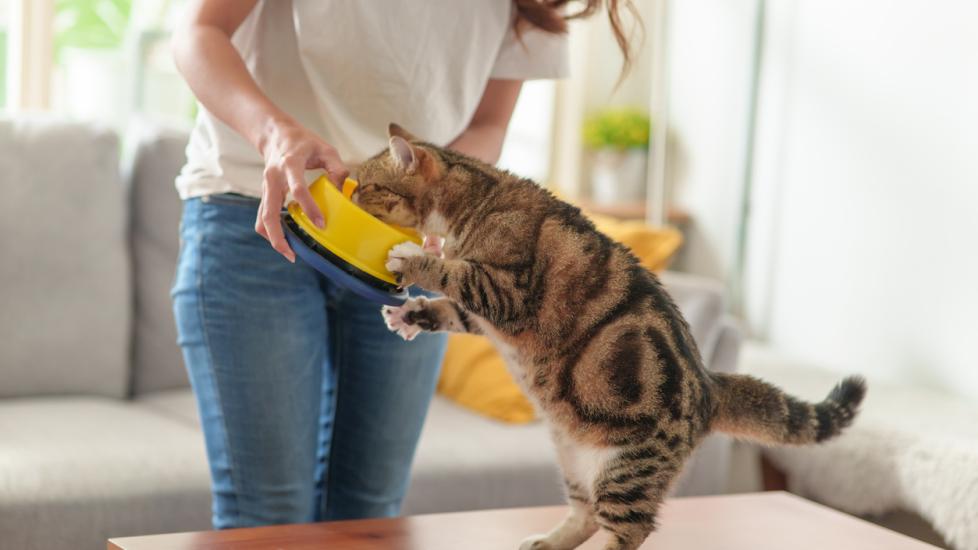What Food is Best for a Cat with Diabetes?
The great majority of diabetic cats have what is called Type 2 diabetes. This means that, early in the course of the disease at least, they are still producing levels of insulin that should be adequate for normal body function. The problem is that the rest of the body has become less sensitive to insulin, almost always due in large part to the hormonal effects of obesity. To have an effect on blood sugar levels, the pancreas has to crank out ever higher amounts of insulin, which eventually exhausts the pancreatic beta cells responsible for insulin production.
If Type 2 diabetes is caught early and treated appropriately, enough beta cell function may remain, allowing the cat to eventually be weaned off insulin injections (called a diabetic remission). This is not usually true for more advanced cases, however. These patient’s beta cells are permanently worn out, and insulin injections remain necessary for the rest of the cat’s life.
The ideal food for diabetes management must achieve three goals:
- Blunt the wild swings in blood sugar levels thereby decreasing the amount of insulin the body needs
- Promote weight loss to reduce the negative hormonal effects of obesity
- Cats must want to eat it
Let me focus on point three for a moment. If a cat won’t eat a food, it obviously can’t have a positive effect on the patient’s condition. Equally important with diabetes is that insulin doses need to be modified based on how much food a cat takes in. A cat’s prescribed insulin dose is based on the assumption that the patient is eating a specific amount of food. If she eats significantly less, the dose must be lowered to avoid the potentially fatal complications of low blood sugar levels. Disease management is much easier and less dangerous if a diabetic cat looks forward to her meals and eats with gusto, allowing the full prescribed dose of insulin to be given without worry.
Thankfully, many cat foods are available that meet all three of these criteria. I can sum up the best choice with one word — canned. Seriously. All canned foods are high in protein and low in carbohydrates, a combination that promotes weight loss and steady blood sugar levels in cats, and most cats love canned foods, unless you’re dealing with an individual who is addicted to kibble.
Sure, we could go into a lot more detail about exactly which canned food might have the ideal nutrient profile for managing diabetes, but that’s unnecessarily sweating the details, in my opinion.

Dr. Jennifer Coates
